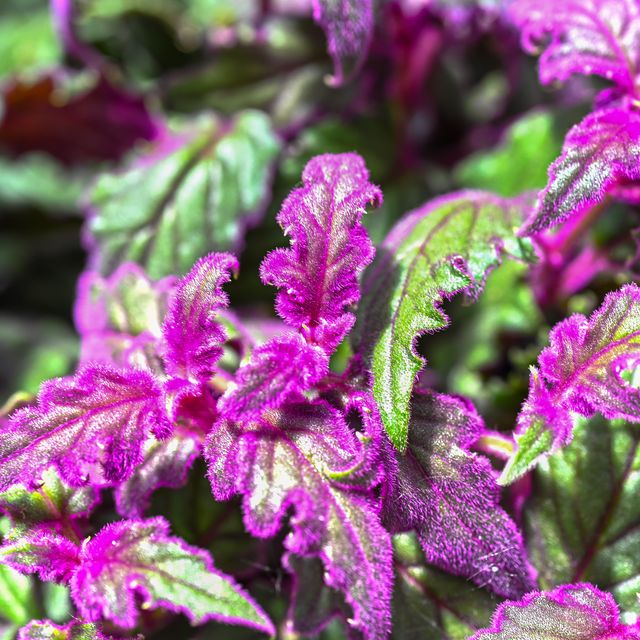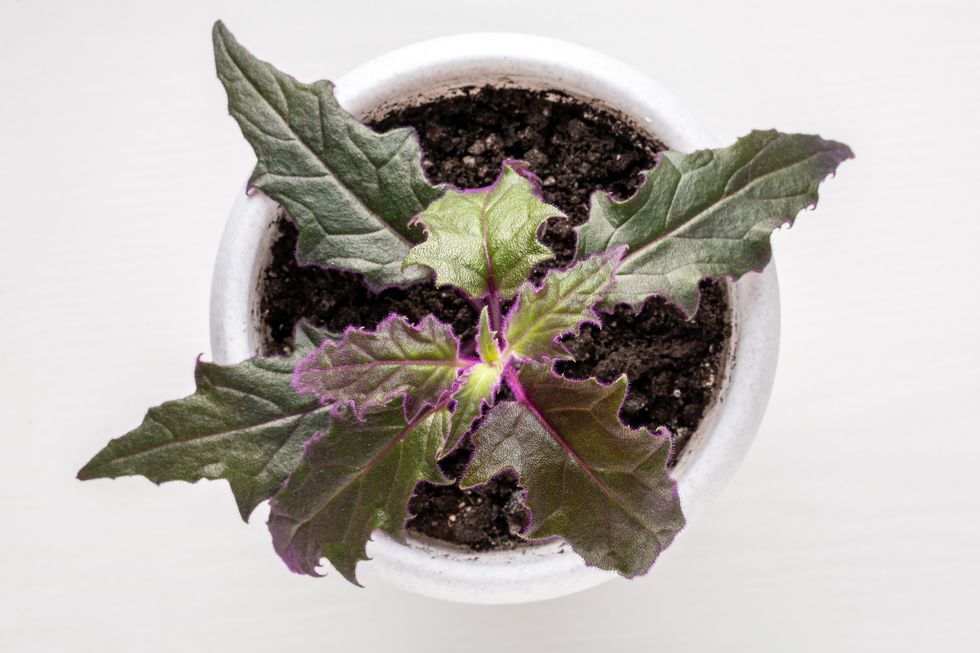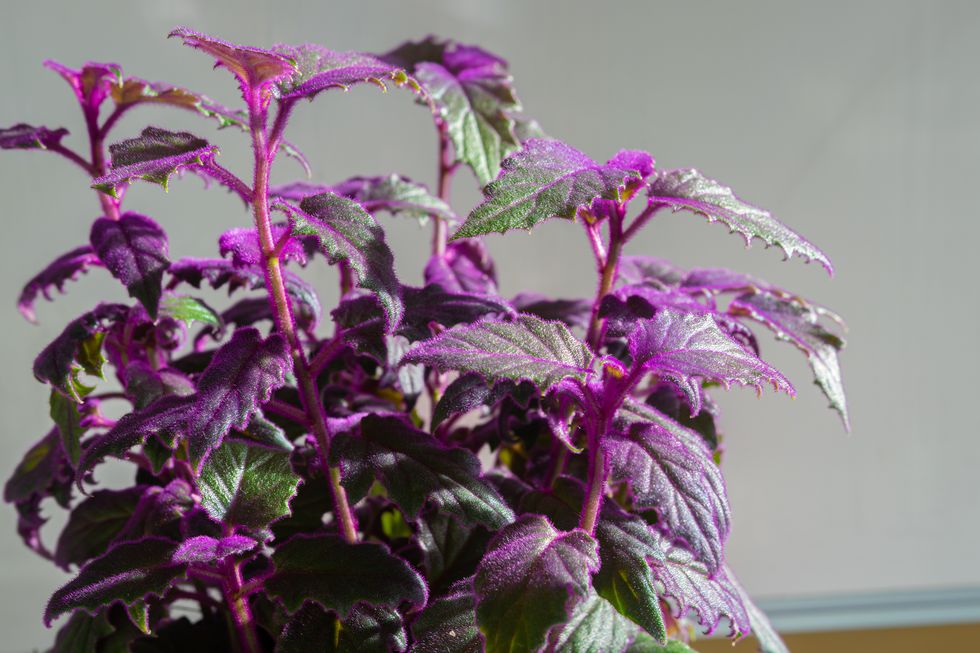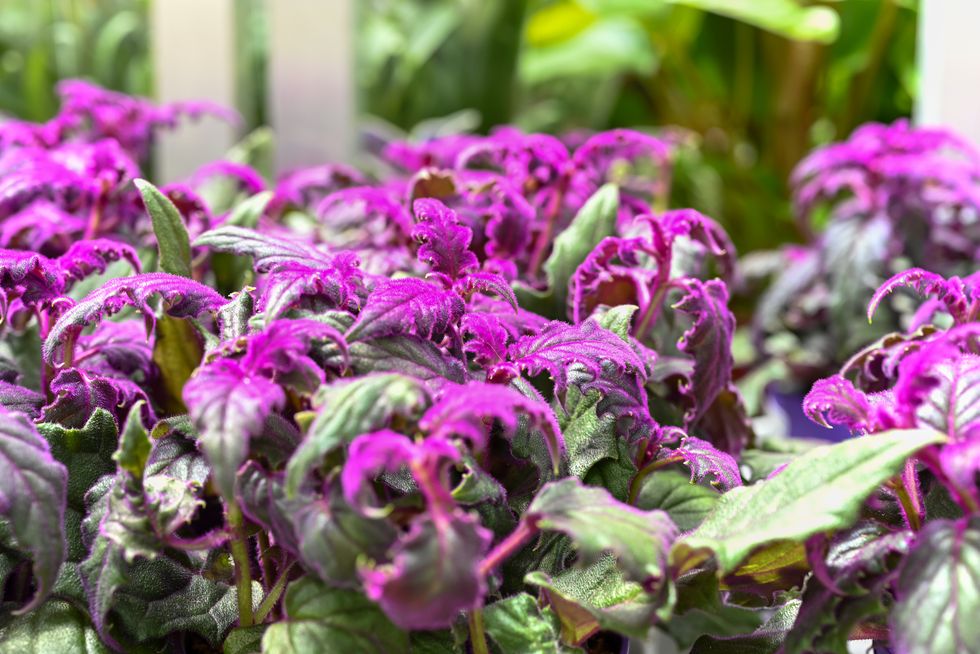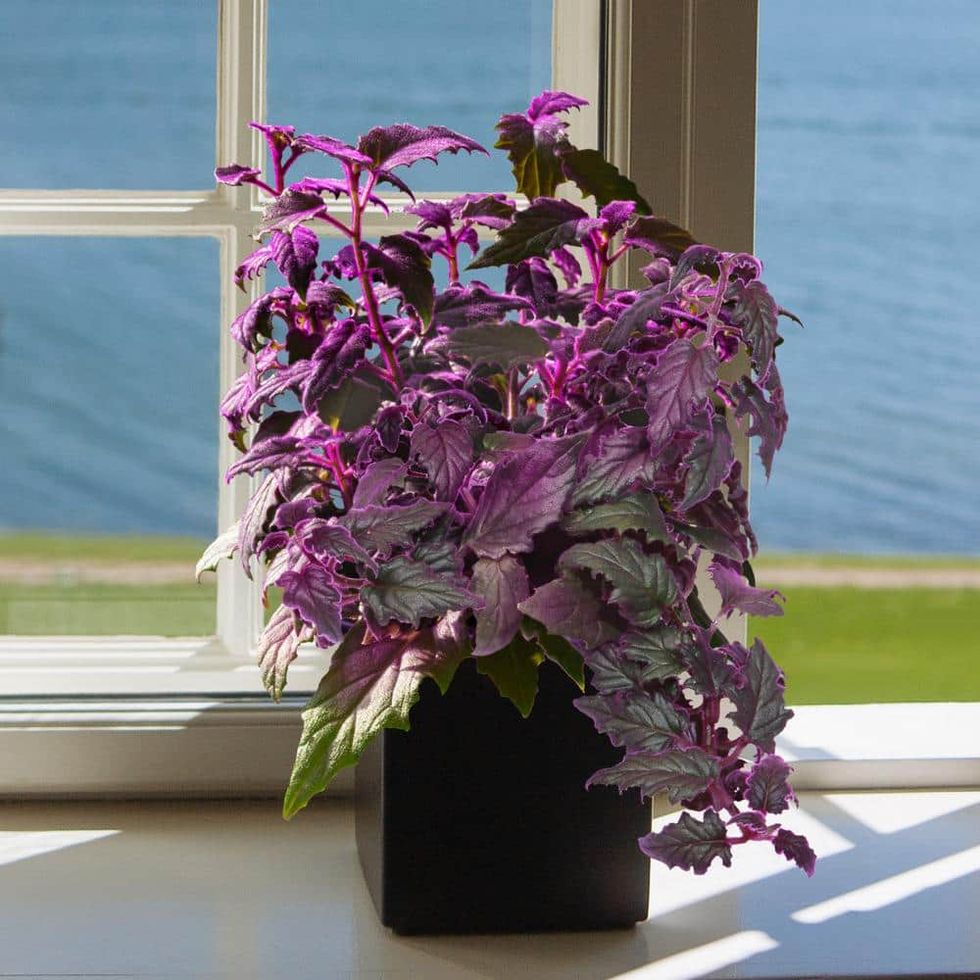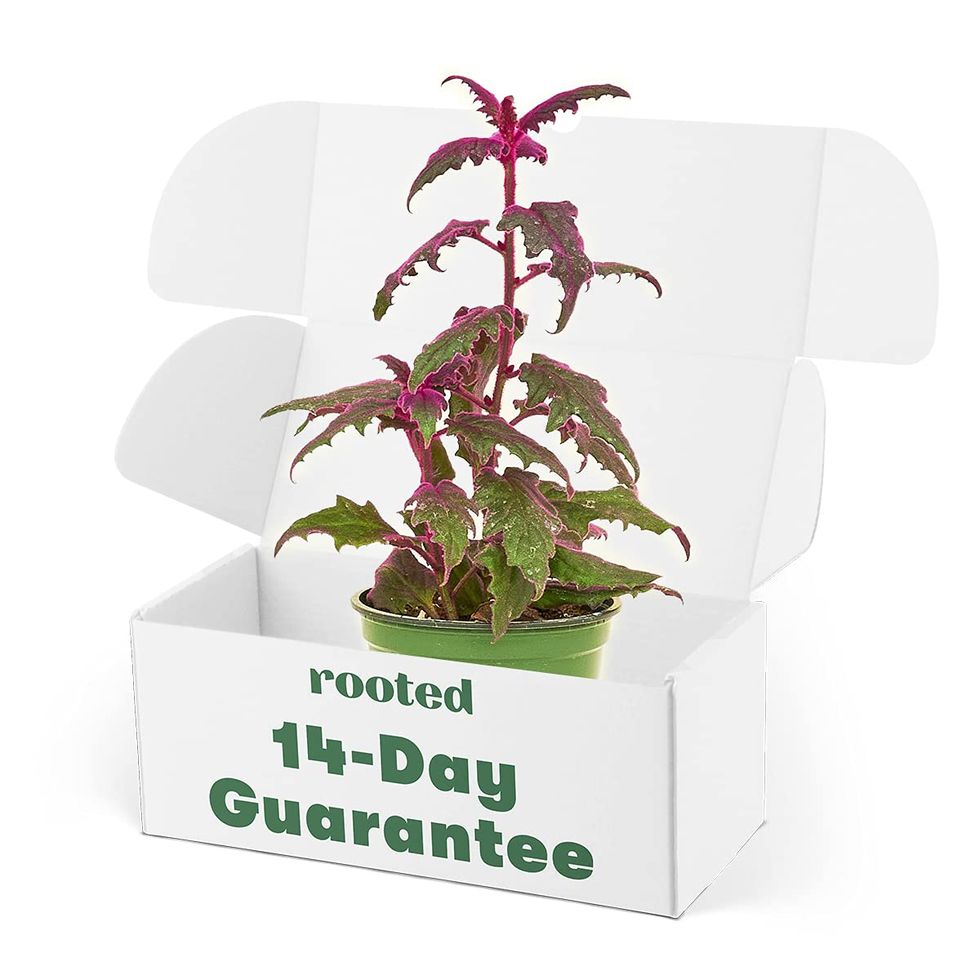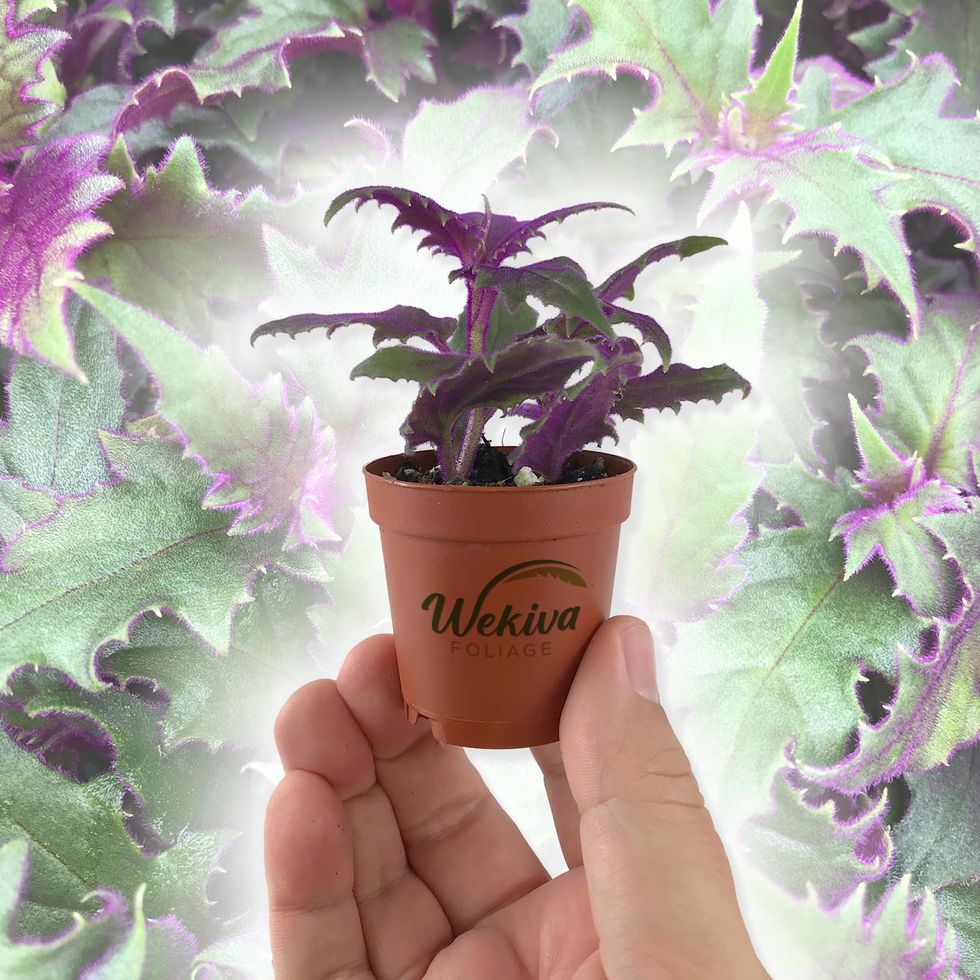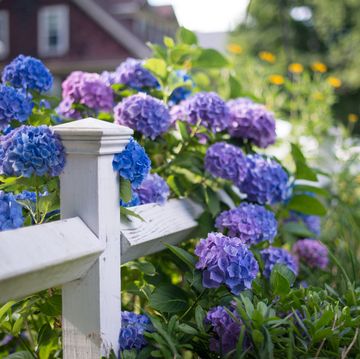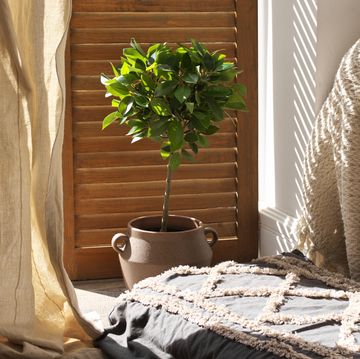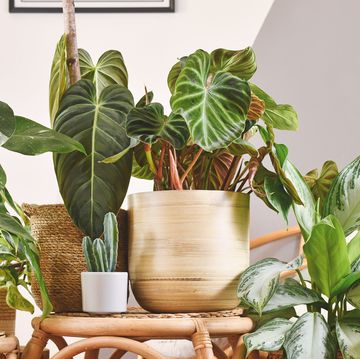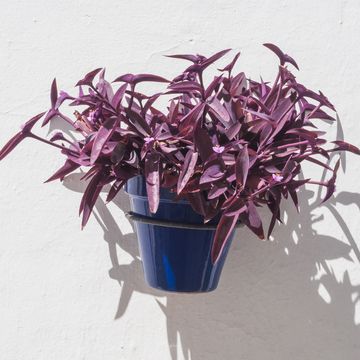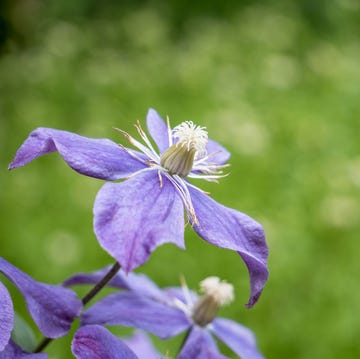You love your sturdy pothos, pretty Pink Princess philodendron, and colorful prayer plant. But if you’re looking for another low-maintenance houseplant that’s eye-catching and unique, check out the purple passion plant.
It’s also known as velvet plant or purple velvet plant.
Purple passion plant (Gynura aurantica) has a vining form with dark green foliage that has serrated edges. What makes it so special is that the leaves are edged in brilliant purple velvety fuzz. It’s a beautiful contrast when arranged alongside your other houseplants.
Native to humid tropical regions around the world, this vining plant adds a rich glow that looks amazing cascading out of hanging baskets.
Purple passion plant handles indoor conditions just fine as long as you don’t overwater it. And although it looks exotic, it’s a relatively un-fussy houseplant that makes a great choice for novice plant parents.
Ahead, learn everything you need to know about how to care for a purple passion plant:
Why Trust Us?
I'm a garden writer with more than 15 years of experience growing houseplants, edibles, and landscape plantings. I also trial new plant cultivars for performance and reliability, and test garden products to evaluate practicality and durability. Purple passion plant is one of the first houseplants I owned as a kid.
Purple Passion Plant Basic Info:
- Common Name: Purple passion plant, purple velvet plant, velvet plant
- Botanical Name: Gynura aurantiaca
- Plant Family: Asteraceae
- Type of Plant: Perennial, grown as houseplant
- Native Origin: Africa, Malaysia, China, Vietnam and Thailand
- Sun Exposure: Part shade
- Mature Size: 1 foot high by 2 feet tall
- Toxic to pets: No
What Is a Purple Passion Plant?
This herbaceous perennial is an easy-care houseplant with gorgeous velvety purple hairs along its leaves.
The purple veins and stems give it an exotic, eye-catching appearance. In warm climates, such as USDA Hardiness Zones 10 and warmer (find your zone here), it may be grown as a ground cover.
How to Care for a Purple Passion Plant
Purple passion plant needs bright, indirect light.
In low light levels, it tends to get leggy. It can take some direct morning sun, but not direct afternoon sun, which is too hot. If you need to place it near a window that gets a lot of direct sun, use a sheer curtain to diffuse the light.
Besides light, the biggest challenge with this plant is not to overwater it. It will absolutely not tolerate soggy soil and will quickly become mushy and die if you are watering it too frequently.
Stick your finger in the soil to test the moisture level before giving it a drink, and water only when the top few inches of soil feel dry.
Also, similar to an African violet, it doesn’t like its foliage to get wet. The hairs on the leaves will hold water and keep it too soggy, which leads to rotting.
Like most houseplants, purple passion plant prefers temperatures from around 60 to 70°F. It also likes humid conditions. If you group it with other houseplants on a pebble tray, their transpiration (when they release water vapor) can be mutually beneficial. You can also run a humidifier nearby. Don't mist it: Misting plants does not raise humidity, plus, this plant’s foliage doesn’t like to stay wet.
Purple passion plant’s growth habit is a little irregular, so if you want to keep it looking full and neat, pinch back leggy stems to within a few inches of the soil surface. Save those cuttings to propagate new plants.
To make new plants with your cuttings, remove leaves from the bottom of the stem so you can poke it directly into moist potting soil.
You can dip it first into rooting hormone if you want to jumpstart the process, but it’s not entirely necessary. Keep the pot in bright, indirect light with the soil lightly moist. It will take a few weeks for the plant to grow roots.
Does Purple Passion Plant Have Flowers?
Sometimes, though you may not want to let it flower.
In bright, indirect light, purple passion may develop clusters of orange flowers. Unfortunately, they have a rancid, unpleasant odor. Snip them off if you don’t like the harsh smell.
Interestingly, these orange flowers are what give the plant its botanical name of aurantiaca, which comes from the Latin for “orange.”
The flowers also indicate the plant has peaked and will start declining. Older plants also may start to lose their bright coloring, so if you’d like to start over, take cuttings and create some new baby plants.
These plants typically live about three to five years, but you can take cuttings indefinitely to make new plants every so often.
Common Issues for Your Purple Passion Plant
Purple passion plant is relatively low-maintenance, but it can have a few problems. The most common is overwatering: It may look wilted or mushy if the soil is too wet.
If the soil is soggy and the plant is starting to look bad, it’s unlikely you’ll save a plant at this point. However, you can try to take some cuttings of healthy pieces and start over.
The plant also may appear wilted or the bright purple color may fade if the soil is too dry; give it a drink and see if it perks up within a day or two.
Finally, purple passion plan also may lose its brilliant color if you have allowed it to flower. To prolong its lifespan, trim off the flower buds when they appear, and the plant should maintain its purple sheen.
Arricca Elin SanSone has written about health and lifestyle topics for Prevention, Country Living, Woman's Day, and more. She’s passionate about gardening, baking, reading, and spending time with the people and dogs she loves.
